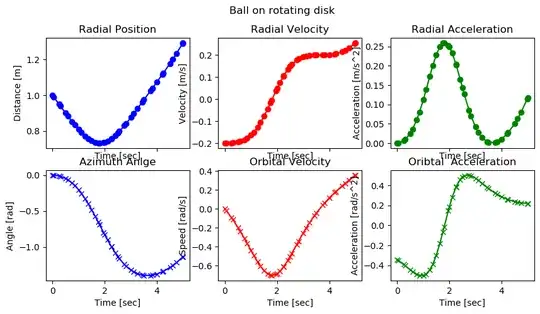It is noticed that when a disk or something of that sort is rotated really fast and a small bead is put on it that bead flies almost radially outwards. Here's my problem:
If there were no friction at all then from an inertial frame of reference the ball would be absolutely stationary. Ok that's fine.
But in the practical case ( that is as we observe generally like I have when I out a small bead on rotating plate) when there is friction (static and dynamic) then the bead seems to be slipping outwards.
Where is this force coming from?
The only inertial (real) force acting is friction; static intially for a short time when the bead just starts to slip away and then dynamic when it should tangentially fly off. (this friction probably curves it a little bit but thats not the issue) But we see that the trajectory is almost radial. There is no radial outwards real force whatsoever so why is this being observed?
My attempt: The bead does actually slip outwards tangentially in a linear trajectory (ignoring small curving due to dynamic friction) but the closer it is to the center the more it seems to be coming from the centre and thus radially outwards. And this is why when we keep the bead to the rim there it does actually looks like flying off tangentially.
So is this attempt of mine correct where the radial outwards motion is just not there but it seems like that to an observer due to the actual tangential motion?
Just to again clearly state my question:
If an observer from an inertial frame observers a bead kept on a rotating frame then does the bead start moving (amsince velocity was alot to overcome any static frictoon)outwards tangentially or radially?
